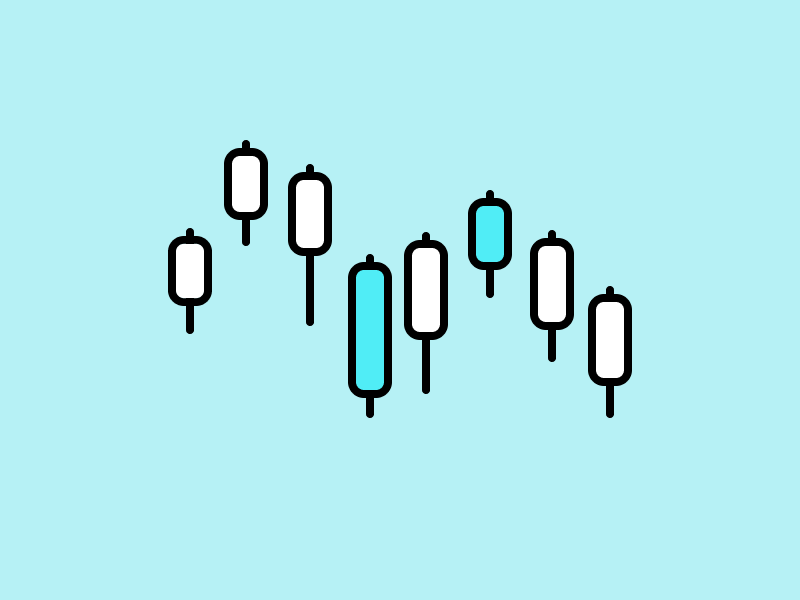Order Types of Time in Force

In the fast-paced and dynamic nature of crypto trading, the concept of time in force can influence its market. Time in force determines how long an order remains active before it is executed or expires. It can also serve as a strategy to optimize trade execution. Good til canceled, immediate or canceled, fill or kill, and post only are the most commonly used types of time in force. Want to know more about them? Check out the full article below.
Article Summary
- ⏱️ Time in force is a special instruction in crypto trading that indicates how long an order will remain active until it is executed or expires.
- ⏳ Good Till Canceled is a type of order execution that remains active until either the order is filled or the user cancels it.
- ⚡ Immediate or Cancel (IOC) is an order to buy or sell all the assets immediately at the best available price. If there is an unfilled order, it will be automatically canceled.
- ⚔️ Fill or Kill (FOK) is an instruction to sell or buy an asset completely and immediately executed, or not at all.
- 🗒️ Post only is an order designed to ensure that your order is only added to the order book and not executed immediately against existing orders.
Order Types of Time in Force
In crypto trading, there is a term called time in force. It is a special instruction used when placing an order to indicate how long the order will remain active until it is executed or expires. Using time in force can be crucial, allowing traders or investors to be more specific with their trading time parameters.
By using time in force, they can avoid the need to cancel orders and prevent unwanted transactions. Limit orders are one of the mechanisms that use time in force. However, time in force itself has several types. Here are some of them:

1. Good Til Canceled
Good Till Canceled Order is a type of limit order execution that will remain active until the order is fulfilled or canceled by the user. This differs from day orders, which expire if the order is not fulfilled until the end of the trading day.
Given the 24×7 nature of the crypto market, this allows GTC to continue indefinitely. While in the stock or forex market, GTC still has an expiration limit of 30 to 90 days.
For example, Aldo has a DEF asset whose current price is at IDR 25,000. Then he wants to sell the asset using GOC order and set a target price of IDR 40,000. Apparently, it takes 10 months for the DEF asset to reach that price. Once the target price is reached, Aldo’s order will be executed automatically.
GTC is a suitable order type for investors who rarely watch the market but have a specific price target in mind. So, once an order is placed, it will remain there until the target price is reached.
Most crypto trading exchanges, including Pintu, use GTC in their order book.
Advantages of Using GTC Order
- Convenience. Using GTC orders eliminates the need to monitor the market or place re-orders.
- Proce targeting. GTC allows investors or traders to set specific price according to their preferences.
- Used as a stop loss. Since GTC has a specific price target, it can be used as a stop-loss method. For example, selling automatically if the price decreases from the specified lower limit.
Disadvantages of Using GTC Order
- Potential for stale orders. The GTC order will become stale if the price moves away from the specified price target.
- Misplaced execution. GTCs used as stop losses may be executed when the market moves at extreme volatility. Due to the extreme volatility, the price quickly went back to the original area. In that case, the investor just sold low and now faces the prospect of buying high if the investor wants to regain the position.
2. Immediate or Canceled
Immediate or Cancel Order (IOC) is an order to buy or sell immediately at the best available price. IOC will also automatically cancel any unfilled portion of the order. In other words, investors or traders using IOC are willing to accept the current market price but only want their orders to be filled at the best available price.
However, there are also IOC limit orders where the trader or investor can specify the price they want. Similar to market order IOCs, orders will only be filled at the target price, and any not filled will be canceled.
For example, Aldo uses an IOC market order to buy ABC assets worth IDR 5 million. In the order book, there are bids for ABC assets worth 3.8 million at a price of IDR 5,110 and worth IDR 1.2 million at a price of IDR 5,118. The IOC order will automatically execute the entire bid at Rp 5,110 (the best price), and the remaining unfilled order worth Rp 1.2 million will be canceled.
In general, IOC orders can be helpful for investors who want to trade quickly and efficiently while minimizing risk. However, IOC orders are not always the best choice in some situations.
Advantages of Using IOC Order
- Speed of execution. IOC orders are designed to execute orders immediately, which can be beneficial when looking to get the best price in volatile markets.
- Partial fills. By using IOCs, orders can be partially filled. This can be helpful for investors or traders who want to get the current market price but not willing to wait for the entire order to be filled.
- Risk mitigation. IOC limit orders can help mitigate risk by avoiding unfavorable prices in volatile market conditions.
Disadvantages of Using IOC Order
- Potential partially filled. While it can be an advantage, a partially filed order can also be a disadvantage. This is because investors may miss out on maximizing their profits.
- Risk of missing trades. If the market prices are moving quickly, the orders may be canceled before they can be filled.
3. Fill or Kill
A Fill or Kill Order (FOK) is an instruction to sell or buy an asset that must be executed completely and immediately or not at all. So, it differs from an IOC order, where the order can be partially filled.
Without a FOK, a large order would take a long time to execute, and prices would vary. In addition, large orders executed over a long period can also lead to price swings and causing market disruption. Therefore, FOK is commonly used to execute large orders.
For example, Aldo is using FOK and wants to sell XYZ assets worth Rp 250 million at Rp 78,400. The order will be canceled if an exchange and its order book do not have XYZ assets of that value and price. The order will be executed instantly if they have and are willing to sell at that price.
In reality, however, the fill-or-kill type of trade does not occur very often. Traders will prefer to use IOC or GTC orders.

Advantages of Using IOC Order.
- Precision. FOK orders ensure that all orders will be executed at once or not at all.
- Quick. Orders will be executed immediately when using FOK orders.
- Risk mitigation. FOK orders can help investors or traders avoid filling orders at unfavorable prices.
Disadvantages of Using IOC Order.
- Potential for cancellation. FOK orders will not be executed if there is no matching order.
- Limited flexibility. FOK orders require traders or investors to specify a single price and transaction amount without room for adjustment. Making it less flexible than GTC or IOC.
4. Post Only
Post-only orders are an additional option that can be used with the limit order feature. It ensures that the limit order is placed into the order book but will not be executed in the market. Post-only will become a maker in the order book, adding liquidity to the market.
Post-only users are only charged maker fees, not taker fees, when the order is executed. In addition, the system will automatically cancel the limit order if it is detected that the limit order will be completed immediately after the order is placed.
For example, Aldi placed a buy limit order on UNI worth IDR 5 million with a target purchase price of IDR 80,000. The best ask price in the order book at that time was IDR 80,150, but it immediately changed to IDR 79,700 once the limit order was placed.
Without post-only, the system will immediately execute the limit order as a market order. The order will be filled from the best ask price of Rp 79,700 to Rp 80,000. Aldi also has to pay taker fees, even though he hopes for cheaper trading costs (only pay maker fees).
Meanwhile, with post-only, the system will immediately cancel automatically because the ask price has changed to a better price (Rp 79,700) from the limit order price placed (Rp 80,000). The system cannot put the limit order in the order book. As a result, Aldi can avoid paying a more expensive trading fee (not subject to taker fees).
Conclusion
Time in force is a special instruction to indicate how long the order will remain active. In crypto trading, there are three types of time in force-based order execution: Good Til Canceled or GTC, Immediate or Canceled (IOC), Fill or Kill (FOK), and post only.
GTC will remain active until the order is filled or canceled by the trader or investor, making it ideal for transactions with specific price targets. IOC aims to execute the order as quickly as possible at the best available price, which may result in the order not being filled entirely.
FOK is used for large orders as it demands thorough and immediate execution of the order, or it is canceled completely. It is offering high precision but risking failure if there is no matching order. Post only is an order designed to ensure that your order is only added to the order book and not executed immediately against existing orders. It can be used to avoid paying higher fees.
Buy Crypto Assets on Pintu
Looking to invest in crypto assets? No worries, you can safely and conveniently purchase a wide range of cryptocurrencies such as BTC, ETH, SOL, and others safely and easily on Pintu. Pintu diligently evaluates all its crypto assets, highlighting the significance of being cautious.
Pintu is also compatible with popular wallets such as Metamask to facilitate your transactions. Download Pintu app on Play Store and App Store! Your security is guaranteed because Pintu is regulated and supervised by Bappebti and Kominfo.
Aside from buying and trading crypto assets, you can expand your knowledge about cryptocurrencies through various Pintu Academy articles. Updated weekly, all Pintu Academy articles are made for knowledge and educational purposes, not as financial advice
References
- James Chen, Good ‘Til Canceled (GTC): What It Is, How It Works, Example, Investopedia, accessed on 14 November 2023.
- James Chen, Immediate or Cancel Order (IOC): Basics, When to Use, Examples, Investopedia, accessed on 14 November 2023.
- James Chen, Fill or Kill (FOK) Order: Definition and Example, Investopedia, accessed on 14 November 2023.
- James Chen, Time in Force: Definition, Types, and Examples, Investopedia, accessed on 14 November 2023.
- Independent Reserve, What is a post-only order type? accessed on 14 November 2023.
Share


